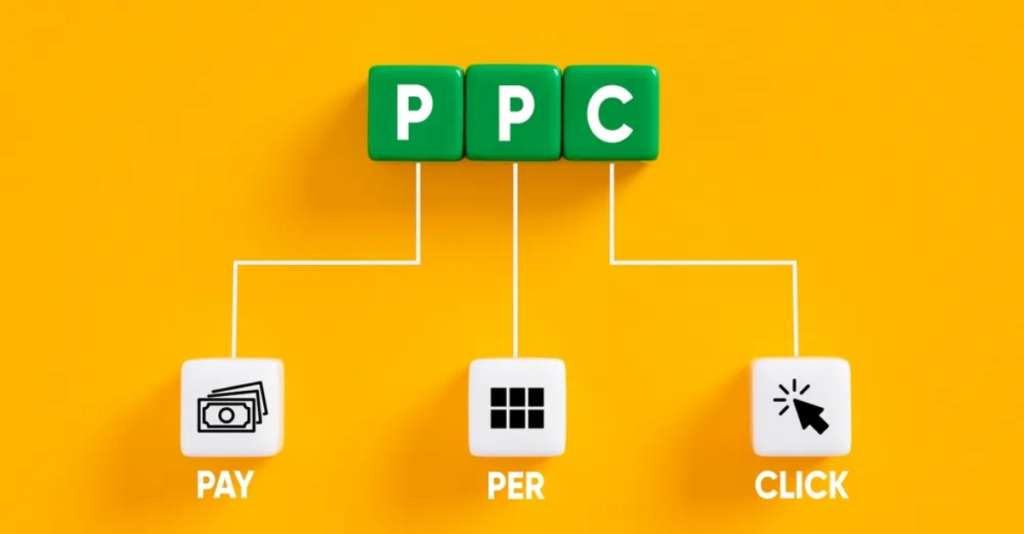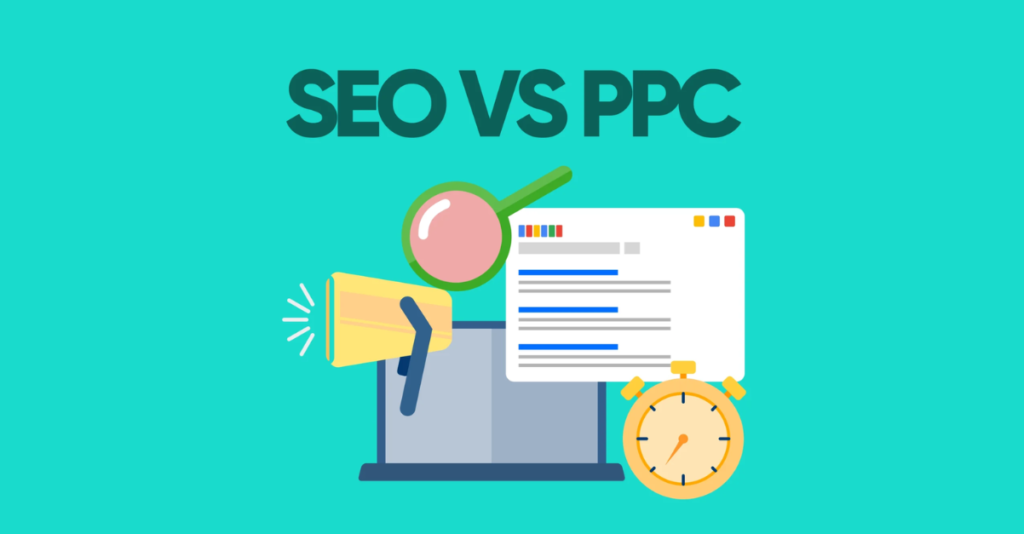PPC vs SEO: Both are essential digital marketing strategies used to drive traffic to websites. While PPC (Pay-Per-Click) provides immediate results through paid ads, SEO (Search Engine Optimization) focuses on organic growth by improving website visibility in search engine results. Choosing the right approach depends on your business goals, budget, and timeline.

This article will explain what PPC and SEO are, their benefits and limitations, and how you can decide which strategy suits your business.
What is PPC?
Pay-Per-Click (PPC) is a paid advertising model where businesses pay each time someone clicks on their ad. Platforms like Google Ads and Meta Ads (formerly Facebook Ads) are commonly used for PPC. These ads appear on top of search engine results or across social media platforms.
For example, if you search for “best smartphones” on Google, the first few results may be labeled as ads those are PPC advertisements.

Benefits and Drawbacks of PPC
Benefits:
- Quick Results: PPC ads can drive traffic as soon as the campaign goes live.
- Targeted Reach: You can customize your ads to reach specific audiences based on location, age, interests, and behavior.
- Performance Tracking: Detailed analytics allow you to measure and improve your campaign’s effectiveness.
Drawbacks:
- Costly: PPC can be expensive, especially in competitive industries.
- Temporary Visibility: Once your budget is spent, your ads stop showing.
- Click Fraud Risk: Sometimes competitors or bots may click on your ads, wasting your money.
What is SEO?
Search Engine Optimization (SEO) is the process of optimizing your website to rank higher in organic search results. Unlike PPC, SEO doesn’t require direct payment for clicks. Instead, it involves improving your site’s content, keywords, backlinks, and user experience to appear at the top of search results.
For instance, a blog post titled “Top 10 Smartphones in India” might rank high on Google’s first page through effective SEO strategies.

Benefits and Drawbacks of SEO
Benefits:
- Long-Term Results: SEO can provide consistent traffic without ongoing payments.
- Cost-Effective: While it requires time and effort, there are no direct costs per click.
- Builds Trust: People tend to trust organic search results more than paid ads.
Drawbacks:
- Takes Time: It can take months to see significant results from SEO.
- Algorithm Changes: Search engines often update their algorithms, affecting your rankings.
- Ongoing Effort: SEO requires continuous updates and improvements.
Which Strategy is Best for You?
- Choose PPC if you need quick results. It’s ideal for time-sensitive campaigns, product launches, or promotions.
- Choose SEO for long-term growth. If you want to build a strong online presence and generate consistent traffic over time, SEO is a better choice.
- Use Both for Maximum Impact. Many businesses combine PPC and SEO. PPC offers immediate visibility, while SEO ensures long-term results.
For example, an online clothing store may use PPC to promote a seasonal sale and rely on SEO for their blog content and product pages to rank higher in search results.
How to Combine PPC and SEO

- Test with PPC: Use PPC campaigns to identify which keywords convert best. Then apply those insights to your SEO strategy.
- Promote Content: If you have valuable content like blogs or guides, PPC can give it an initial visibility boost while your SEO efforts grow.
- Retargeting: Use PPC ads to re-engage visitors who viewed your website but didn’t make a purchase.
Conclusion
Choosing between PPC and SEO depends on your goals, budget, and how quickly you want results. PPC offers immediate traffic but can be costly. SEO, on the other hand, requires patience but provides long-term benefits.
For many businesses, a combination of both strategies works best. PPC can generate quick leads while SEO builds a strong and sustainable online presence. Evaluate what suits your business needs and adjust your strategy as you grow.
